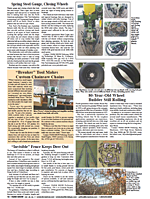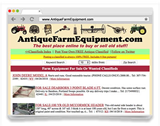2025 - Volume #49, Issue #2, Page #18
[ Sample Stories From This Issue | List of All Stories In This Issue | Print this story
| Read this issue]
Fresh Milk Heats Dairy Farm
 |
“The area didn’t have any natural gas, and we didn’t want to rely on propane,” says A.J. Stobbe. “We got to thinking that if we have to chill the milk and heat the barn, wouldn’t it be cool to harness one to do the other?”
From this offhand thought, a creative method was developed to heat the dairy’s milking parlor, house and swimming pool. Inspired by leading-edge European dairies, the Stobbes installed a geothermal system to pull heat from the farm’s milk supply and store it in underground piping. The raw milk is essentially flash-cooled to 2 C (36 F) in the chiller before reaching the large, insulated storage tank.
“The biggest benefit is the milk is already cooled when it hits the storage tank, so it only needs to maintain itself at that level,” Stobbe says. “It’s better for milk safety and quality, plus it’s not wasting electricity constantly trying to cool it down.”
Six geothermal heat pumps in the milking barn send fluid through a closed-loop system of 10,000 linear ft. of HDPE piping filled with antifreeze. These lines are buried at 6 and 10 ft. depths under a 2-acre section of the farm’s cornfield.
The system removes heat in the form of heating or adds heat in the form of cooling. Stobbe says the entire clay field will be warmed during the summer. Since the clay holds heat well, the farm can use the supply through the winter months.
“This field section is 27 C (80 F) by the end of summer. During the winter, when we’re sucking out the heat, it remains frosty long into spring and is always the last area for the snow to melt,” Stobbe says.
All the farm’s buildings use in-floor heating systems to incorporate the heat energy from the buried closed-loop piping.
Stobbe says they’ve made some upgrades since the system was installed, and it still works great.
“Originally, the equipment and installation total was six figures, but what does electricity cost to run a dairy farm’s heating and cooling for over 20 years? I haven’t penciled it out, but it’s probably more than that,” Stobbe says.
Contact: FARM SHOW Followup, Serene Lea Farms and Village Dairy Ltd., 3475 Smith Dr., Armstrong, B.C., Canada V0E 1B1 (ph 250-517-7454; sereneleafarms@gmail.com; www.villagecheese.com).

Click here to download page story appeared in.

Click here to read entire issue
To read the rest of this story, download this issue below or click here to register with your account number.




